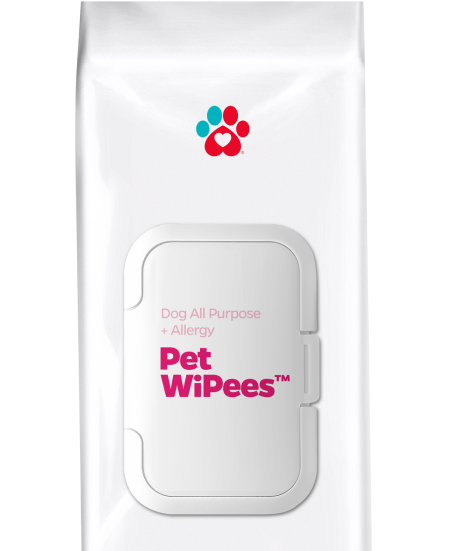How to Care for Your Dog with Spina Bifida
Updated: July 12, 2022
It can be life-changing to know that our furry family members are experiencing something painful that will hinder them from doing things they love like taking walks to the park, and running and playing. Among the many spinal illnesses that affect your dogs, Spina Bifida is one of them.

"After pups are born, you should constantly be checking for any abnormalities as they grow up."
Here's a thorough discussion on what Spina Bifida is about, symptoms, diagnosis, and proper management so that you and your dog can still live a fun, happy life.
What is Spina Bifida in Dogs?
Spina Bifida is a spinal illness in dogs. According to the exerts at UC Davis Veterinary Medicine, Spina bifida arises due to the deformity of the spinal cord and/or vertebrae during a mother dog’s pregnancy. The spinal cord is protected and surrounded by the vertebrae of the spinal column. If during the fetal development the vertebrae doesn't completely grow around the spinal cord, a part of the spinal cord is exposed. It strikingly creates impact on the quality of a dog’s life. They have difficulties walking, or cannot walk at all, and are incontinent, making them susceptible to endless cycles of skin and urinary tract infections.
Unfortunately, the life expectancy of a dog with Spina Bifida is not ideal. Many would consider dogs with Spina Bifida not to be ideal pets because they require extensive management. Unfortunately, the level of management is not feasible for most pet parents. So, sadly, many are euthanized at a young age. However, there are many steps you can take as the pet parent to take care of your dog with Spina Bifida. Learn how to take care of your dog with Spina Bifida, how it is diagnosed, Spina Bifida symptoms in dogs, and more in this article.
How is Spina Bifida Diagnosed?
Spina Bifida is a congenital abnormality. After pups are born, breeders should be constantly checking for any abnormalities as they grow up. Usually when the puppy has Spina Bifida, they crawl or walk differently compared to their other littermates.
The veterinarian will record the history of the puppy’s environment and their development. The pup will also undergo a series of examinations both neurological and physical. Typically, radiographs and myelography can help confirm the diagnosis of spina bifida in dogs. Your vet may also require a CT scan.
How Will I Know if is Spina Bifida?
Even if Spina Bifida does not worsen as your puppy grows older, the symptoms of having this disease is more than enough to make it hard for the pup to live a quality life. Some dogs don't develop signs, others do. Here are some of the signs to look for, according to Vetstream.
- Weakness of rear limbs
- Incomplete paralysis of one or both hind legs
- Lack of coordination
- Loss of sensation in the region between the tail and the reproductive part
- Fecal incontinence
- Urinary incontinence
Note: Some of these clinical signs can be associated with other diseases too which is why consultation with a neurologist and diagnostics are recommended.

How to Take Care of a Dog with Spina Bifida: Treatment and Management
Generally, there is no known treatment for dogs with Spina Bifida. Depending on the severity of the dog's condition, euthanasia may be recommended. Some puppies can experience a great deal of discomfort and pain that will severely impact their qaulity of life.. For some who don't have severe cases, you can do some things to improve your furbaby's quality of life.
Maintain good hygiene. Bathe your dog regularly and groom them to keep them happy despite their condition. Their skin is at high risk of chafing and becoming sore especially at the hips, elbows and ankles. Always check these areas for dogs with Spina Bifida.
Provide proper nutrition. Providing your furbaby a good, healthy diet is a perfect way to boost up their wellness. But make sure that this diet is advised by your veterinarian so it will provide them with the proper nutrition they need.
There are also supplements available, like that of Pet Parents® Hip and Joint SoftSupps® that help support better mobility, contribute to overall joint health, and assist with joint stress recovery.
Pet Parents® also offer Multivitamin SoftSupps®. These 5-in-1 multivitamins help provide your dog with Spina Bifida with daily health support.
Note: Before giving your furbaby supplements, consult your vet first if they are on certain medications and medicines to be safe.
Dog diapers and Pawtect® Pads. Going back to what's stated above, to avoid your dog from bathing in their pee and poop, Pet Parents® dog diapers and Pet Parents® Pawtect® Pads are such great help in keeping your dog comfortable and your home clean since dogs with Spina Bifida are known to also suffer from urinary and fecal incontinence. It is extremely important to change your dog's diapers regularly in order to avoid the development of sores. Many dogs with Spina Bifida may need bladder expressions if they experience urinary incontinence. So, be sure to talk to your vet if your dog is experiencing incontinence.
Go out. Your dog's condition should never hinder the both of you to experience the world together. There are wheelchairs and carts that will help you and your paralyzed dog move around.
Having a dog who is experiencing Spina Bifida is never easy but there are things you can do and provide to make your dog's life better, even with a disability. Spina Bifida in dogs can cause some challenges, but they are still loving, loyal pets.

"Dog diapers and Pawtect® Pads are such great help in keeping your dog comfortable and your home clean since dogs with Spina Bifida are known to also suffer from urinary and fecal incontinence."
- Featured Products
-

 Dog Diapers
Dog Diapers -

 Multi-Vitamin SoftSupps®
Multi-Vitamin SoftSupps® -

 Pawtect® Pads
Pawtect® Pads




















